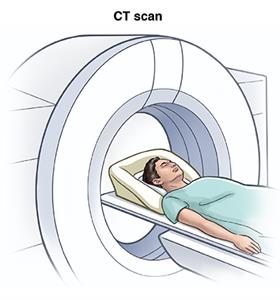Spinal Arteriovenous Malformations
Spinal Arteriovenous Malformations
What is a spinal arteriovenous malformation?
Arteriovenous malformations (AVMs) occur when the connections between the veins and arteries don't form correctly and the vessels become entangled. Usually, these abnormalities develop in the fetus, or in a newborn baby.
AVMs can occur anywhere in the body. When they happen in the spinal cord and brain, they are called neurological AVMs, and are more likely to affect different parts of your body. This is because the brain and spinal cord make up the central nervous system.
What causes spinal AVMs?
AVMs are equally common among different races and ethnicities, and in both sexes. Most people don't even know that they have a spinal AVM—it may be found during treatment or diagnosis for another condition.
Spinal AVMs can cause problems with circulation because they interfere with your body's blood flow. Normally, your arteries transport oxygen-rich blood away from your heart and to cells throughout your body. Your veins carry that blood, with its oxygen stores used up, back to your lungs and heart. But the malformations of your arteries and veins in spinal AVMs don't allow this natural cycle to occur because of missing capillaries, which regulate blood flow.
Spinal AVMs can lead to a serious situation if they rupture, causing bleeding into surrounding areas. They can also cause symptoms by compressing parts of your spinal cord.
What are the symptoms of spinal AVMs?
Spinal AVMs often don’t cause any symptoms. When they do, they're usually minor and hard to notice. In a few people, however, the symptoms can be severe enough to affect their ability to function.
These are the most common symptoms of a spinal AVM:
- Muscles that feel weak or become paralyzed
- Problems with balance and coordination (ataxia)
- Pain or unusual sensations throughout your body, such as tingling or numbness
How are spinal AVMs diagnosed?
If you have symptoms, your healthcare provider may use these tests to find out if you have a spinal AVM:
- Angiography (X-rays used along with a dye injected into your artery)
- MRI scans
- CT scans
- Magnetic resonance angiography
How are spinal AVMs treated?
Treatment depends on the location and type of AVMs you have and the symptoms they cause. You may require surgery by a neurosurgeon to remove the AVM. Or, endovascular embolization may be used instead. This is less invasive than surgery in which a radiologist uses a catheter (small, thin tube) to inject an embolizing material to close off certain vessels. Radiation therapy is also an option. Focused energy is used to damage and seal off the abnormal vessels.
Your doctor may also give you medicines to treat symptoms, such as back pain, caused by AVMs.
What are the complications of spinal AVMs?
If spinal AVMs aren't treated, they may cause damage to your spinal cord because it can't get the oxygen it needs from your blood. A spinal AVM may also bleed.
Living with spinal AVMs
Even though a spinal AVM may not always cause symptoms, it can still be dangerous, particularly if it starts to cause symptoms. Your health care provider should check any suspicious symptoms you have. These may include:
- Muscles that feel weak
- Muscle paralysis
- Difficulty with balance and coordination (ataxia)
- Unusual sensations, such as numbness or tingling, or pain
Key points about spinal AVMs
- Arteriovenous malformations (AVMs) occur when the connections between veins and arteries don't form correctly and the vessels become entangled.
- AVMs can occur anywhere in your body. But when they happen in the spinal cord and brain, called neurological AVMs, they are more likely to affect different parts of your body.
- Pay attention to the following symptoms of spinal AVMs and seek medical help for:
- Muscles that suddenly feel weak or become paralyzed
- Any problems you may be having with balance and coordination
- Pain or unusual sensations, such as numbness or tingling in your body
When should I call my healthcare provider?
Your doctor should evaluate any signs or symptoms that indicate a problem with your nervous system, such as headaches that won't go away, seizures, and difficulty controlling your muscles.
Next steps
Tips to help you get the most from a visit to your healthcare provider:
- Know the reason for your visit and what you want to happen.
- Before your visit, write down questions you want answered.
- Bring someone with you to help you ask questions and remember what your provider tells you.
- At the visit, write down the name of a new diagnosis, and any new medicines, treatments, or tests. Also write down any new instructions your provider gives you.
- Know why a new medicine or treatment is prescribed, and how it will help you. Also know what the side effects are.
- Ask if your condition can be treated in other ways.
- Know why a test or procedure is recommended and what the results could mean.
- Know what to expect if you do not take the medicine or have the test or procedure.
- If you have a follow-up appointment, write down the date, time, and purpose for that visit.
- Know how you can contact your provider if you have questions.
Updated:
April 09, 2017
Sources:
Neurosurgical Focus 2009 Jan;26(1):1-5 Lad S.P. et al., “National trends in spinal arteriovenous malformations.”
Reviewed By:
Dozier, Tennille, RN, BSN, RDMS,Shelat, Amit, MD
